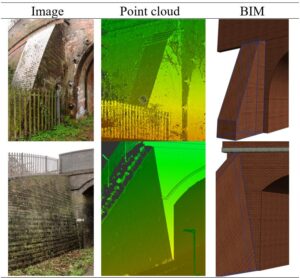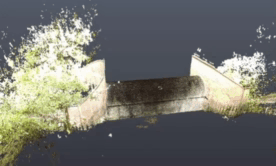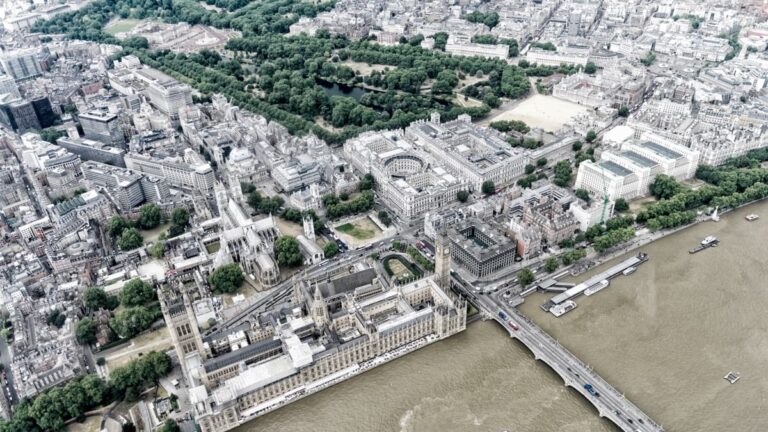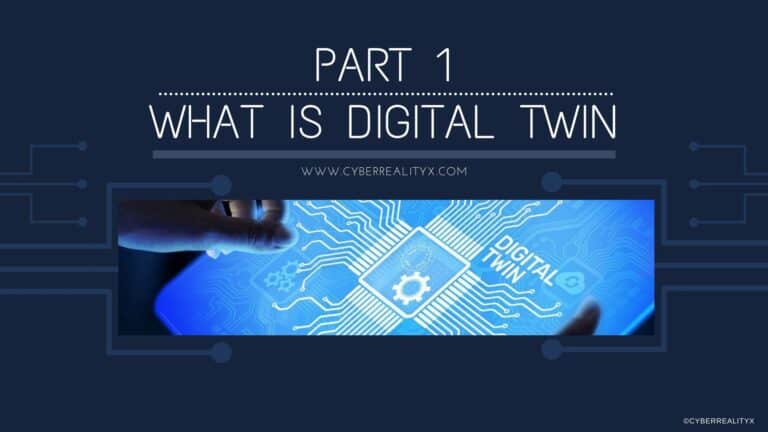Introduction
The generation of a Digital Twin of existing railway bridge from the surveyed Point Clouds model is quite challenging. This process highly relies on BIM specialist to model the bridge using tools such as Autodesk Revit or ArchiCAD. In the time of writing this article, this process needs approximately 10 times more of modelling hours than the scanning of the physical asset. Furthermore, the cost of the modelling counteracts the expected benefits of the geometric digital twin model.
In general, the building/infrastructure is scanned by Terrestrial laser scanning (TLS) to obtain Point Cloud data, and then the data is transferred to BIM tools such as Revit, Bentley, Graphisoft, to reconstruct a BIM model, and because this process is time-consuming, many researchers in the AECO industry trying to automate this process, it’s called “Scan to BIM” or “Point Clouds to BIM“.
In the current practice, there is no single software can accommodate all aspects of geometric modelling. Even state-of-the-art tools such as Edgewise and FARO PointSense are still semi-automated and support a few types of standard components such as walls and pipes.
To address these limitations of BIM modelling practice, this study developed an automated BIM-library approach for railway underline bridges. the output is a geometric digital twin of the bridge that can be exported in Industry Foundation Classes (IFC) format. The system was successfully tested on 30 different types of railway assets.
- Arch bridge.
- Span Bridge
- Multiple spans (viaduct).
Proposed Digital Twin Approach
We are proposing a four steps semi-automated approach to create a geometrical digital twin of masonry railway bridges using Point Cloud scanning data, the approach includes:
- BIM library creation.
- Component identification.
- BIM model generation.
- Component adjustment.
In general, the underline bridge is a combination of elements. A typical bridge composite of major elements these are 1) Deck (DK), 2) End Support (ES), and 3) Intermediate supports (IS). A major element includes a number of minor elements, such as Abutment, Wing wall, Spandrel, parapet, Padstone, etc. From a geometrical perspective, Bridge elements of the same type have different shapes, parameters and positions which make the library creation quite challenging. See figure 01.

It is important during the creation of the bridge library to establish the relationship between elements in terms of geometries, parameters and materials. See Figure 02 a high-level diagram of the approach which breaks the reconstruction process of digital twin into four stages.
STAGE ONE: Develop a Digital Twin Library, this was created based on Bridge Condition Marking Index (BCMI) guideline for bridge health monitoring using BIM tools, Autodesk Revit. The BCMI contain all the standard elements of the bridge that required regular examination (Major and Minor).
STAGE TWO: Identify the component from the Point Clouds scene. Basically to check if there is a new element within the structure or a new feature within an element that is missing and/or wasn’t included in the library. This step is important to maintain the library and keep it up to date.
STAGE THREE: Establish the position and orientation of individual elements. The TLS provides a Point Clouds model registered with a local coordinate system. A dynamo script was developed to identify the spatial location of each bridge component from the Point Clouds scene.
STAGE FOUR: Sets of algorithms were developed using dynamo to connect all previous stages and to extract the required parameters from the point cloud data and send it to element parameters. The parametric nature of each element gives the flexibility to adjust the geometries of the created Digital Twin model.

This approach was tested successfully over 30 bridges in the UK. below is an illustration of the implementation on a single-span Arch bridge.
- First, we scan the bridge using the TLS device, in our case we used FARO.
- Second, the obtained data processed using tools like Scene or Autodesk recap, see Figure 03.
- Third, imported the model to Autodesk Revit. see video 01 for a full demonstration.

Video 01 demonstration
Key Finding
- The proposed approach of BIM reconstruction can generate a digital twin model almost automatically.
- It doesn’t require a clean Point Cloud model.
- The single-span masonry arch bridge contains approximately 440million points.
- The developed algorithm follows the density of the Point Clouds.
Advantages
- The system can process a complex structure of railway bridges.
- The digital representation is sufficiently accurate for condition assessment.
- The algorithm works well with an uncleaned Point Clouds data.
- Average process time 15 to 20 minutes from start to finish.
Limitations
- In some cases, it might need manual adjustment.
- The library is limited to a specific type of bridge element.
- Additional parameters are needed to accommodate different types of the same elements.
Conclusions
- The data acquired from scanning devices (TLS, Drone, etc.) can not directly use to establish a digital information system Digital Twin.
- The conventional process of creating a BIM model from Point Clouds data is time-consuming.
- We proposed an approach to automate the reconstruction of railway bridges from `Point Clouds data, which can also be applied to other physical assets.
- The approach was demonstrated on an industry project of 30 underline bridges.
- The output result of each bridge component is validated against the point cloud achieving 50 mm tolerance.
- The new process has reduced the traditional modelling times from days/weeks to hours for the thirty bridges.
Although the current library is limited to railway bridges, it is possible in the future to expand into other infrastructure assets, such as tunnels, culverts and retaining walls. or could be used for a different type of bridges like highway bridges.
Referencing
A Free Access to the full paper from here => An automated approach to digitise railway bridges
If you are interested or you want to have a private discussion about this article leave a comment or you can drop me a message on LinkedIn, Facebook, Twitter, Instagram or use the Contact Page.
Don’t forget to subscribe to our newsletter





